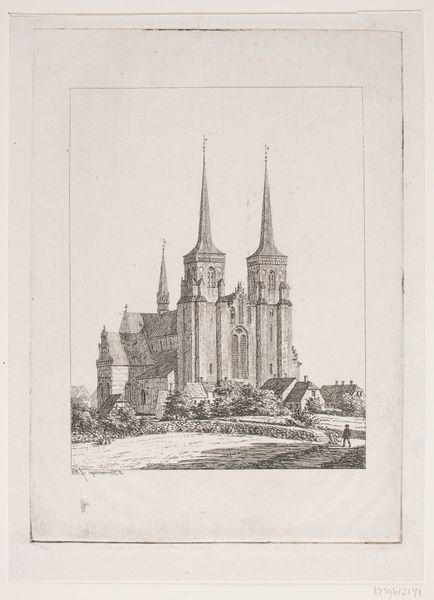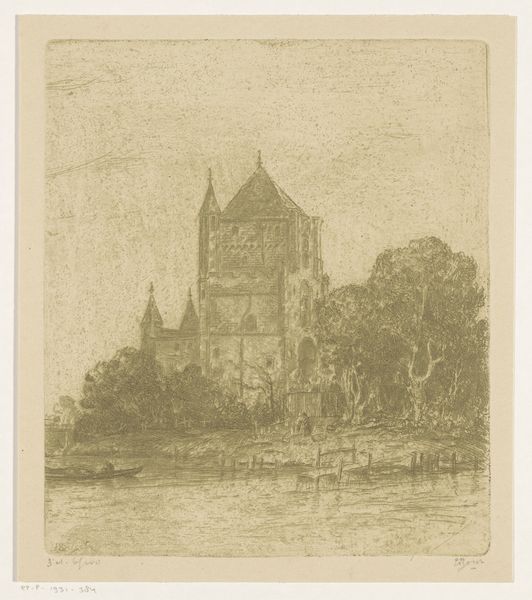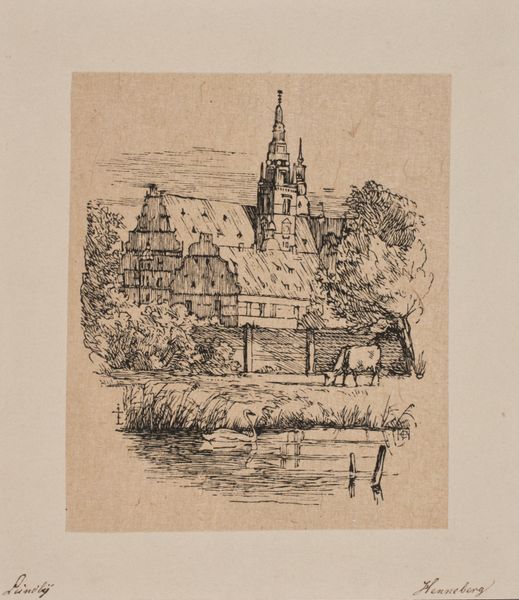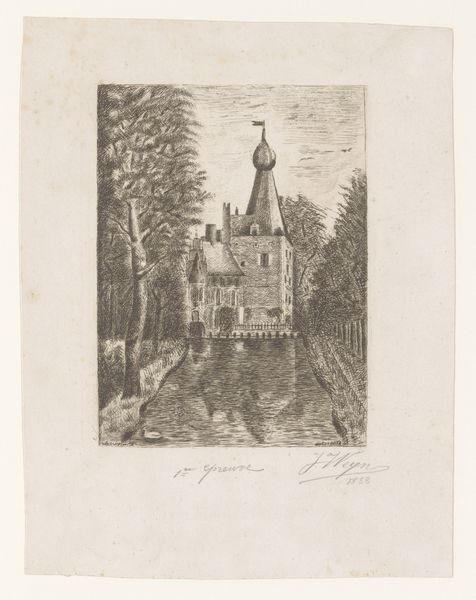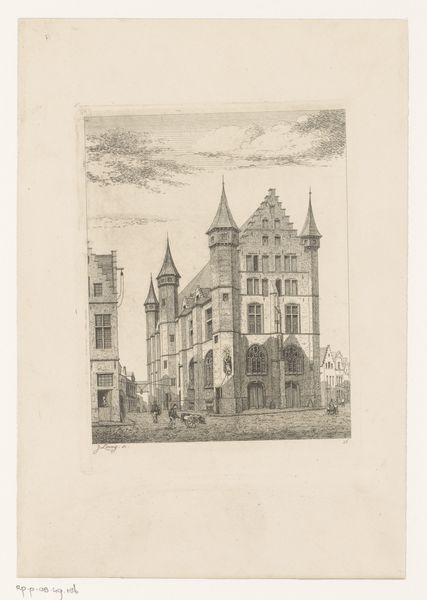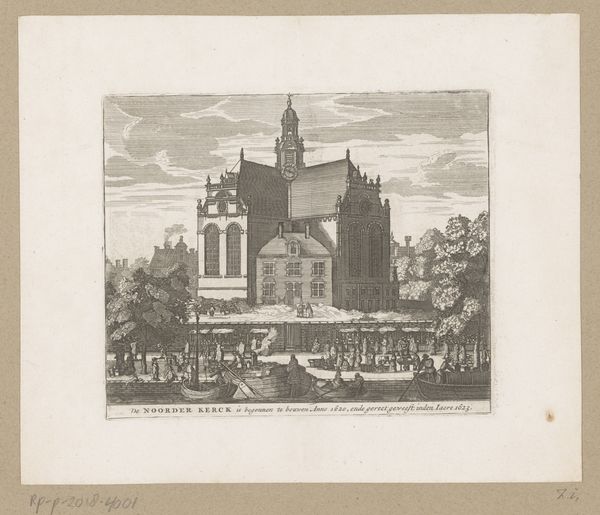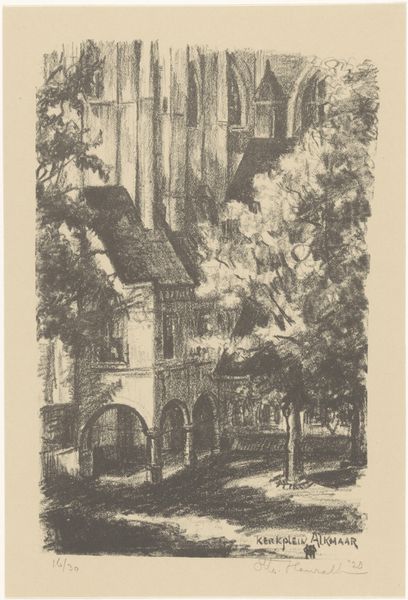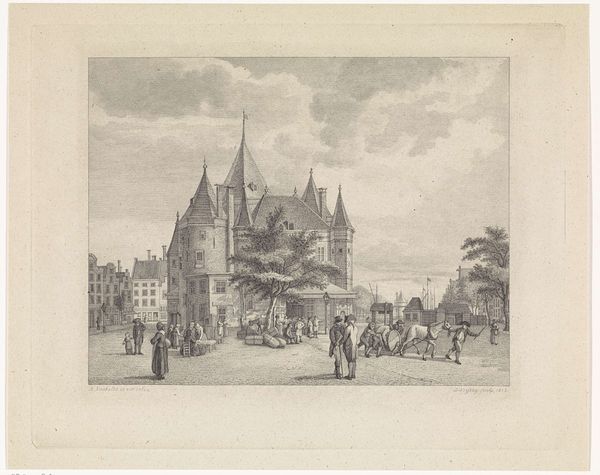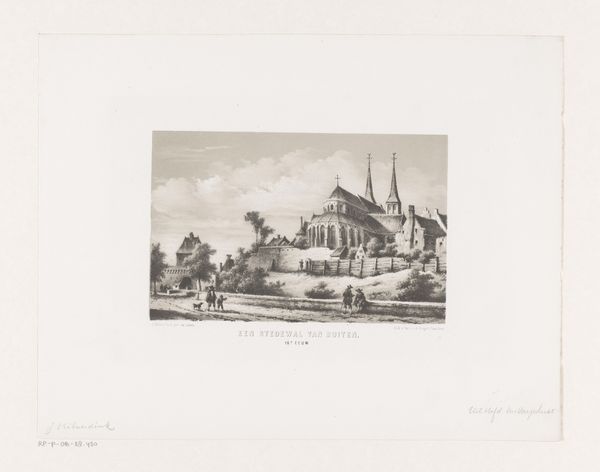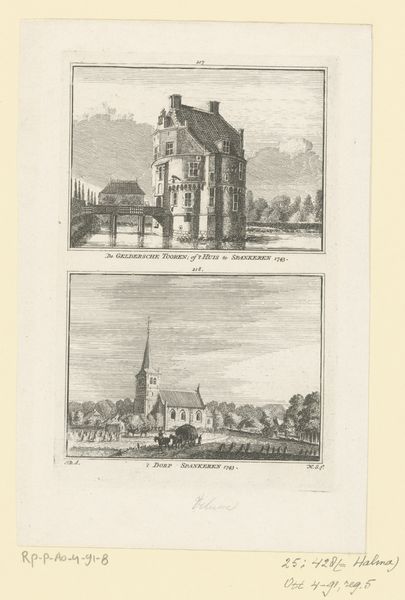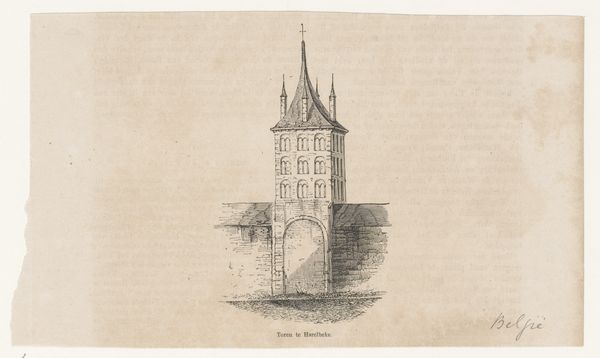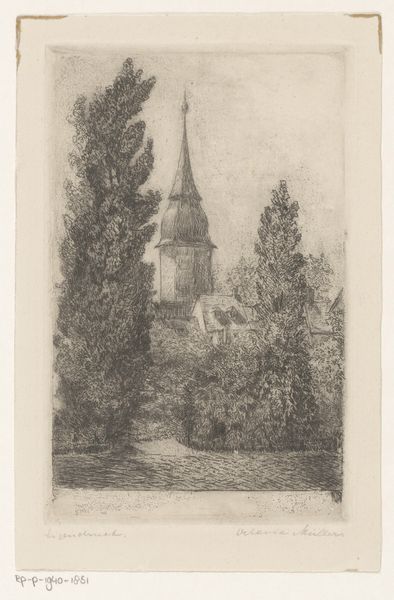
drawing, print, etching
#
drawing
#
dutch-golden-age
# print
#
etching
#
old engraving style
#
landscape
#
cityscape
#
realism
Dimensions: height 242 mm, width 149 mm
Copyright: Rijks Museum: Open Domain
Curator: Before us we have "Gezicht op de Oostpoort, te Delft," or "View of the Oostpoort, in Delft," possibly dating from between 1890 and 1897, by Philip Zilcken. It is an etching. Editor: Well, it feels like peering into a dream. Ethereal, almost vanishing. It evokes that feeling of half-remembered stories from childhood, doesn't it? Melancholy, maybe. Curator: That sense of transience, I think, is rooted in the Oostpoort itself. It represents Delft’s medieval past, the city's layered history condensed into this singular architectural form. These city gates have always been potent symbols. Editor: Layered history, definitely. Look how the gate rises, those spires mirroring each other like a reflection across time itself! The artist plays with symmetry and contrast. You see the dark, solid structure of the gate itself offset by the almost feathery lightness of the trees. Curator: Notice too how the reflections in the water, they almost dissolve the solid structure. Zilcken subtly undermines the permanence we expect from architecture. Consider city gates in terms of Jungian psychology; the threshold they represent isn't just geographical, but psychological, representing entry into new stages of consciousness. Editor: Entry… or exit? Makes you wonder who passed through those gates, what they carried with them – hopes, fears, bundles tied with string... and were they ever the same after passing? And those tiny figures, little ghosts strolling in the distance! It hints at the continuity of life unfolding around the enduring form of the gate. It's like time flowing. Curator: Yes, they certainly ground us, the trees with their symbolic language and their seasons! The print, rendered with such intricacy through the etching, gives us access to how Zilcken makes use of this visual dialogue. The details pull us closer and further. Editor: Definitely a powerful image. This work left me wandering what other stories those ancient stones could tell. Curator: And what narratives, too, do we construct to enter our psychological Delft, and leave with a piece of that historical and collective knowledge.
Comments
No comments
Be the first to comment and join the conversation on the ultimate creative platform.
